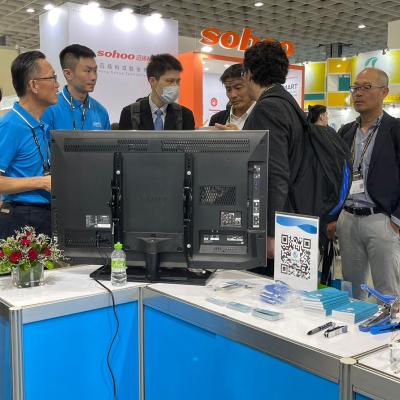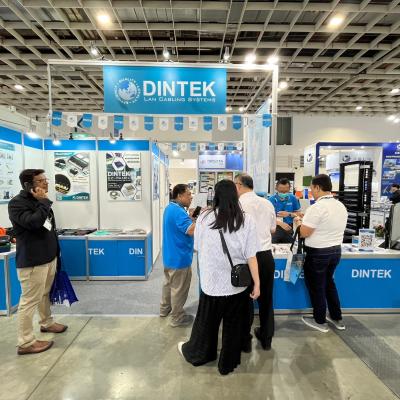Copper Prices Surge
Why Cheap cable is a risk
you can't afford
Copper is once again in the global spotlight. Recent reporting in the Financial Times highlights what many industries—from construction to electronics to data infrastructure—already know too well: copper prices have surged and show no sign of settling in the near term. Supply constraints, increased demand from renewable energy and electrification projects, and unstable global market conditions have all pushed copper to some of the highest price levels seen in years.
For the structured cabling sector, the impact is immediate and unavoidable. Copper makes up the core of twisted-pair network cable, and when the price per tonne rises sharply, every manufacturer in the world feels it. And that means every distributor, every installer, and every end user feels it too.
But there’s a growing risk in how parts of the market are responding—and it’s one that can put entire networks at risk.
The Temptation of 'Cheap Cable": Why It's A Red Flag
When copper costs spike, some manufacturers seek ways to keep sticker prices low to maintain sales volume. Since copper pricing affects everyone equally, the only way a cable can be significantly cheaper during a global copper surge is if something inside that cable has been reduced, downgraded, or replaced.
And nearly all of these cost-cutting approaches compromise performance, safety, or long-term reliability.
Here are the most common shortcuts:
Lower Copper Content
Some manufacturers reduce the percentage of copper in conductors or shrink conductor diameter.
This immediately affects:
- Conductivity
- Signal integrity
- PoE performance and heat dissipation
- Attenuation and long-distance performance
Copper-Clad Aluminium (CCA)
CCA is one of the most concerning substitutions. It drastically reduces cost but is not compliant with standards for most Ethernet installations.
CCA can cause:
- Increased attenuation
- Poor PoE performance
- Fire safety risks (higher resistance more heat)
- Unreliable terminations and breakage
CCA simply cannot match solid copper cable and should never be used in certified or safety-critical networks.
Reduced Jacket Material
Manufacturers may cut corners on:
- Jacket thickness
- Jacket compound quality
- Flame-retardant additives
Thinner or inferior jackets may deform, split, or fail to meet fire ratings. In plenum or riser environments, this can create serious safety compliance problems.
Removal or Reduction of Pair Separators
Central dividers and spline materials help maintain pair integrity and consistent geometry—key to controlling crosstalk.
Removing or thinning these components affects:
- NEXT and FEXT
- Category-rating compliance
- Long-term deformation inside conduits
Cheaper Box/Spool Construction
Even packaging can indicate shortcuts:
- Poor box design leads to kinking, tangles, and micro-bends
- Inconsistent pull tension weakens the cable
- Lower-quality winding causes deformation and performance loss
Packaging isn’t cosmetic—it protects the performance of the cable inside.
The Reality: Copper Prices are High and Will Stay High
Global analysts agree that copper supply challenges will take time to stabilise, with demand from EVs, green energy, data centres, and expanding global infrastructure continuing to outpace supply.
As a result, cable pricing has increased and is likely to continue rising, with no manufacturer immune to these pressures. So if one brand is significantly cheaper while copper prices are historically high, it’s not because they’ve discovered a magic source of low-cost copper — it’s because they’ve cut corners.
Why Sticking With Standards-Compliant Cable Matters Now More Than Ever
Structured cabling is a 10–15 year investment—often the longest-lived component of any IT system. Saving a few dollars per box today can result in enormous long-term costs:
- Network failures and downtime
- VoIP or CCTV instability
- PoE overheating
- Failed certification tests
- Reinstallations and labour costs
- Warranty and compliance issues
And once poorly made cable is installed behind walls, above ceilings, or throughout a building, the cost of replacing it is enormous.
DINTEK'S MESSAGE
TO INSTALLERS, RESELLERS &
END-USERS
We understand the market pressure. Customers still expect pre-inflation pricing, while copper continues to climb. But the push toward ultra-cheap cable poses a serious risk to the integrity of networks and the reputation of installers.
DINTEK is committed to:
Maintaining full copper conductor standards
Ensuring material quality even under price pressure
Protecting performance across all category-rated lines
Upholding safety standards and certifications
Keeping network reliability front and centre
We cannot compromise on the materials that make networks perform, especially when the market is full of shortcuts disguised as savings.
A Final Word: Don't Let The Herd Stampede
In times of volatility, it’s easy for the market to rush toward the lowest price. But the lowest price in a high-copper-cost world is almost always a warning sign.
Cheap cable is never cheap in the long run.
By choosing compliant, standards-tested, full-copper products, installers and customers protect themselves from failures, safety issues, and rework costs that dwarf the temporary savings of low-quality alternatives.
DINTEK will continue to support our partners with reliable, standards-compliant products—because quality always outlasts the market fluctuations.








